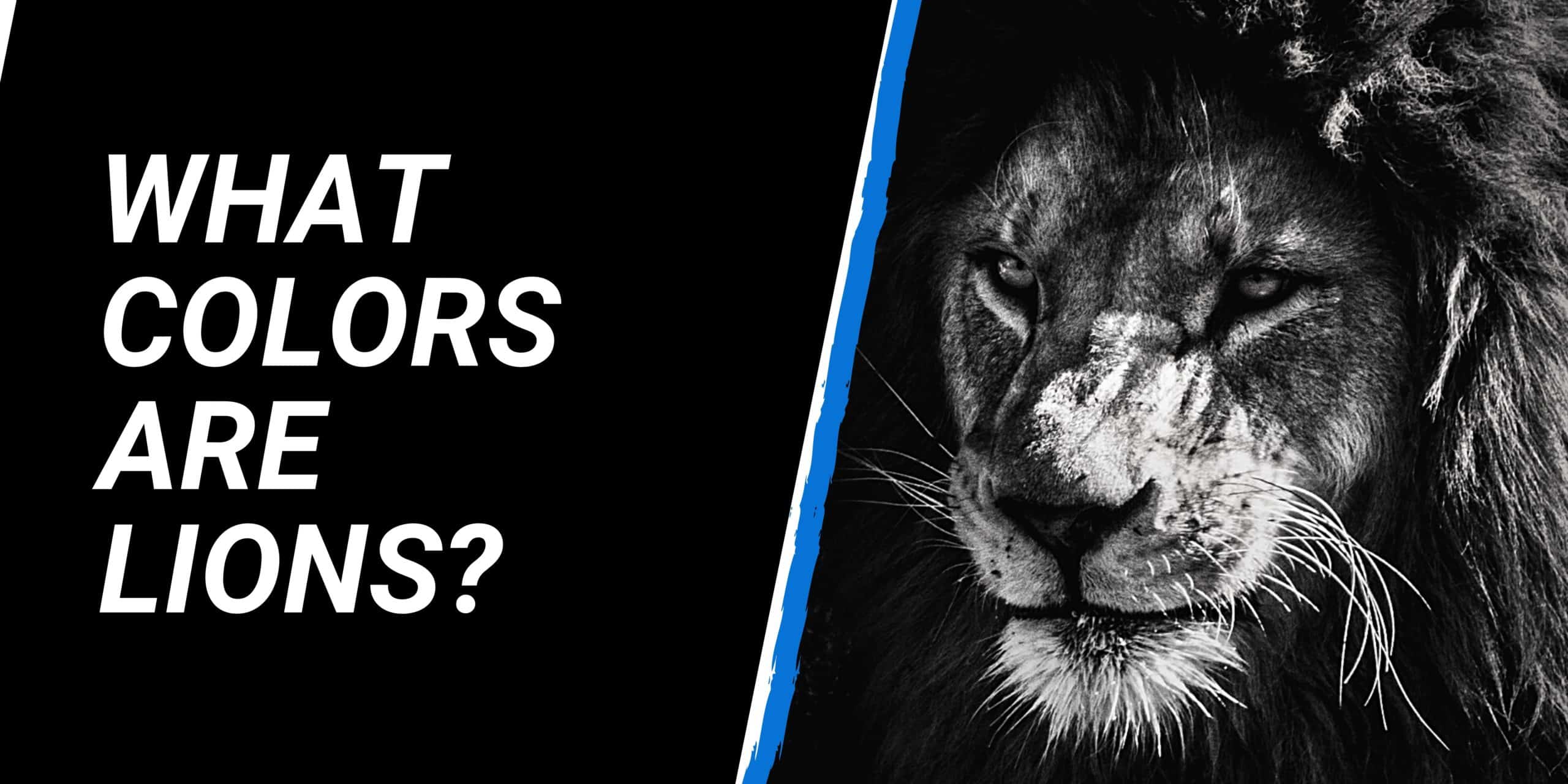Question: What colors are Lions?
Lions range in color from white, brown, ochre, sandy, grey and a deep orange-brown and are usually determined by age, genetics and hormones.
The IUCN (International Union for Conservation of Nature) recognizes two subspecies of lions (Panthera leo):
- The African Lion
- The Asiatic Lion
Color-wise, male Asiatic lions have a darker mane that is sparser and scraggy than their African relatives who have a full mane that ranges in color from tawny to reddish-brown, even black. Unfortunately, though, approximately only 30 000 African lions remain in the wild and sadly only around 400 Asiatic lions.
Let’s learn more about Lions colors
Lions have a short coat of fur with a tuft of hair at the end of their swishy tails. In most sub-species, a lion’s torso is a sandy-brown color but there are white and dark brown variants, although rare, located in certain regions of Africa and India (the only location for the surviving Asiatic lion).
Why are lions different colors?
Good question! Lions are different colors for genetic and environmental reasons. For instance, you have probably heard of the white lion before, right? Aptly named by the distinct color of their fur, white lions have “white” fur (technically light brown) because of a rare recessive gene mutation causing their skin to lighten considerably. A common misconception is that they are albino. Of course, this is not the case given they have visible pigment in their eyes, typically blue and not the reddish color we typically associate with albinism.
And while they might be aesthetically pleasing to the human eye, it’s really just a massive headache for the white lion. Why? Because of their unique coloring, they lose the ability to camouflage into their surroundings thus exposing them to predators and compromising their hunting ability.
The chance of spotting a white lion in the wild is considerably rare after commercial lion trophy hunting made them virtually extinct. Today, most white lions can only be seen in captivity, although some efforts have been made to re-introduce them back into the African desert.
But what about the black lion? Well, technically black lions do not exist. However, black-maned lions do exist. In fact, possessing a dark mane is a symbol of power and indicates strength and good health. (Now try telling The Lion King that. I’m looking at you Scar…).
In fact, the darker the mane, the healthier a lion is. A dark mane is not only more intimidating because of its ominous visual appearance, but it also suggests a well-fed lion. And there’s nothing scarier than looking down the barrel of a well-fed, powerful lion.
However, for the lion, this is excellent news. Black-manes symbolize a long lifespan and may even have an easier time recovering from any sustained injuries compared to their light-maned compatriots.
The environment, too, can play a factor in the coloring of a lion’s mane. A lion’s mane color can fluctuate depending on how much stress or trauma they have experienced and their environment. For example, if a black-maned lion experiences stress we may notice the mane lighten. But once they have recovered, moved locations, or eaten, then we would see the mane darken once again.
However, a black mane can be a huge pain during the warmer months with temperatures soaring. But cooler climate regions such as South Africa and Morocco, allowing the lion to maintain his luscious locks.
Summary
The ultimate goal for the lion is to be the same color as their surroundings. For the African lion, this means blending in with the African savanna. As a result, they are usually a light brownish-orange color (tawny) which allows them to camouflage and match the vegetation. For the Asiatic lion, they are typically darker which helps them to blend into the dry shrubbery forest of Gir National park in Gujarat, India.
The lion’s mane color can also largely depend on climate. For example, lions in cooler climates tend to have darker manes, as opposed to lighter, sandier manes in warmer climates. In addition, color is a good indicator of a lion’s health and strength. A black mane is a symbol of power, strength and shows a bill of good health.
Unfortunately, the white lion is genetically handicapped with their uniquely pale fur that prevents them from blending into their surroundings exposing them to predators, especially human hunters.
Fun fact
A baby cub has a far better chance of survival if their papa has a dark mane and as an added bonus, the female lioness is especially susceptible to a male lion with a dark mane. Meow…
Frequently Asked Questions
People who ask ‘What colors are Lions?’ also ask;
What is the color of a lion body?
Body color ranges from pale white to tawny yellow, ash brown, ochre and a dark orange-brown. In most sub-species, a lions body is sandy-brown but there are white and dark brown variants, although rare, located in certain regions of Africa.
Why are lions different colors?
The lion’s mane color can largely depend on climate. For example, lions in cooler climates tend to have darker manes, as opposed to lighter, sandier manes in warmer climates.
Do black lions exist?
Technically, no. Completely black lions do not exist. However, black-maned lions do. In fact, possessing a dark mane is a symbol of power and indicates strength and good health.
What causes a white lion?
Contrary to popular belief, a “white lion” is technically light brown, not albino. This paleness is caused by a recessive gene that causes white skin coloration.
